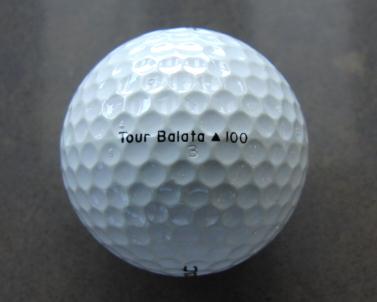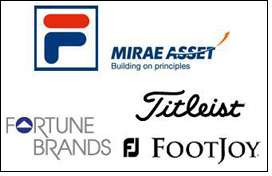Sometimes even the best putt doesn’t go quite where you would like or expect. Eighty-four years ago, a well-struck putt by Philip “Skipper” Young veered off course and away from the hole. Scratching his head, Young took the ball to his friend, a fellow golfer and dentist, for an x-ray. In the black-and-white image, they could see that the core of the ball had become askew.
By 1910, Young, an MIT graduate, had already founded Acushnet Process Company which concentrated on deresinating latex and producing rubber. After his experience with the missed shot that should have been “for sure,” Young developed a machine that could uniformly wind rubber string around a rubber core—creating the wound golf ball. With his “Dead Center” concept behind the new “Titleist” ball, he proclaimed it to be the winner of the quest to create the best for the game. By 1949, just a few years later, Titleist had become the most-played golf ball in the U.S. Open.
 From there on out, the market knew Titleist as the benchmark brand. American Brands, now known as Fortune Brands, bought Acushnet and its golf brands in 1976. It wasn’t until the 1980s that Titleist began to experiment once again. They developed the Balata golf ball: exceptionally soft with incredible control around the green. However, it was expensive and not very durable. So began the production of the “Professional,” a ball with the same performance as the Balata but with a more durable cover. Titleist then bought the longtime golf clothing company FootJoy (“The #1 Shoe and Glove in Golf”) from General Mills in 1985.
From there on out, the market knew Titleist as the benchmark brand. American Brands, now known as Fortune Brands, bought Acushnet and its golf brands in 1976. It wasn’t until the 1980s that Titleist began to experiment once again. They developed the Balata golf ball: exceptionally soft with incredible control around the green. However, it was expensive and not very durable. So began the production of the “Professional,” a ball with the same performance as the Balata but with a more durable cover. Titleist then bought the longtime golf clothing company FootJoy (“The #1 Shoe and Glove in Golf”) from General Mills in 1985.
 In 1994, eighteen years after selling Titleist, Acushnet again bested the rest of the golf industry with the acquisition of Scotty Cameron, a master putter maker. Tiger Woods used the same customized Cameron putter for thirteen of his fourteen major championships. In 1996, Acushnet bought Cobra Golf, a company that specialized in drivers and game-improvement irons for the masses, for the price of $700 million. Acushnet also owned Pinnacle Golf, a producer of low-price, distance golf balls.
In 1994, eighteen years after selling Titleist, Acushnet again bested the rest of the golf industry with the acquisition of Scotty Cameron, a master putter maker. Tiger Woods used the same customized Cameron putter for thirteen of his fourteen major championships. In 1996, Acushnet bought Cobra Golf, a company that specialized in drivers and game-improvement irons for the masses, for the price of $700 million. Acushnet also owned Pinnacle Golf, a producer of low-price, distance golf balls.
 Today, Titleist produces a successful and complete line of woods, irons, wedges, and putters to complement their Pro V1, NXT, DT, and Velocity lines of golf balls. They set the standard, and at least 40% of the wedges in play from week to week on the PGA Tour are Titleist Vokey Design.
Today, Titleist produces a successful and complete line of woods, irons, wedges, and putters to complement their Pro V1, NXT, DT, and Velocity lines of golf balls. They set the standard, and at least 40% of the wedges in play from week to week on the PGA Tour are Titleist Vokey Design.
 In the fall of 2000, Pro V1 debuted. As explained in an earlier blog post, the Pro V1 differs from the Pro V1Xin dimple count and number of pieces; the Pro V1 is a three-piece, solid-core golf ball with more dimples than the four-piece Pro V1X, which is why they differ in flight, feel, and spin. We’ve also posted about thelegal battle between Callaway and Titleist over the ProV1 patent.
In the fall of 2000, Pro V1 debuted. As explained in an earlier blog post, the Pro V1 differs from the Pro V1Xin dimple count and number of pieces; the Pro V1 is a three-piece, solid-core golf ball with more dimples than the four-piece Pro V1X, which is why they differ in flight, feel, and spin. We’ve also posted about thelegal battle between Callaway and Titleist over the ProV1 patent.
 Titleist is always the most-played golf ball at any PGA Tour event and has been for as long as most people can remember. In October of 2010, Fortune Brands put Acushnet up for sale; and in May of 2011, a Korean group associated with Fila Korea and Mirae Asset Private Equity purchased it for $1.23 billion (in cash!).
Titleist is always the most-played golf ball at any PGA Tour event and has been for as long as most people can remember. In October of 2010, Fortune Brands put Acushnet up for sale; and in May of 2011, a Korean group associated with Fila Korea and Mirae Asset Private Equity purchased it for $1.23 billion (in cash!).
Don’t have $1.23 billion in the back pocket of your FJ pants? You can still own at least a (small) piece of the Titleist legacy with a recycled ball (of the same brand that billionaires use) from Lost Golf Balls.
